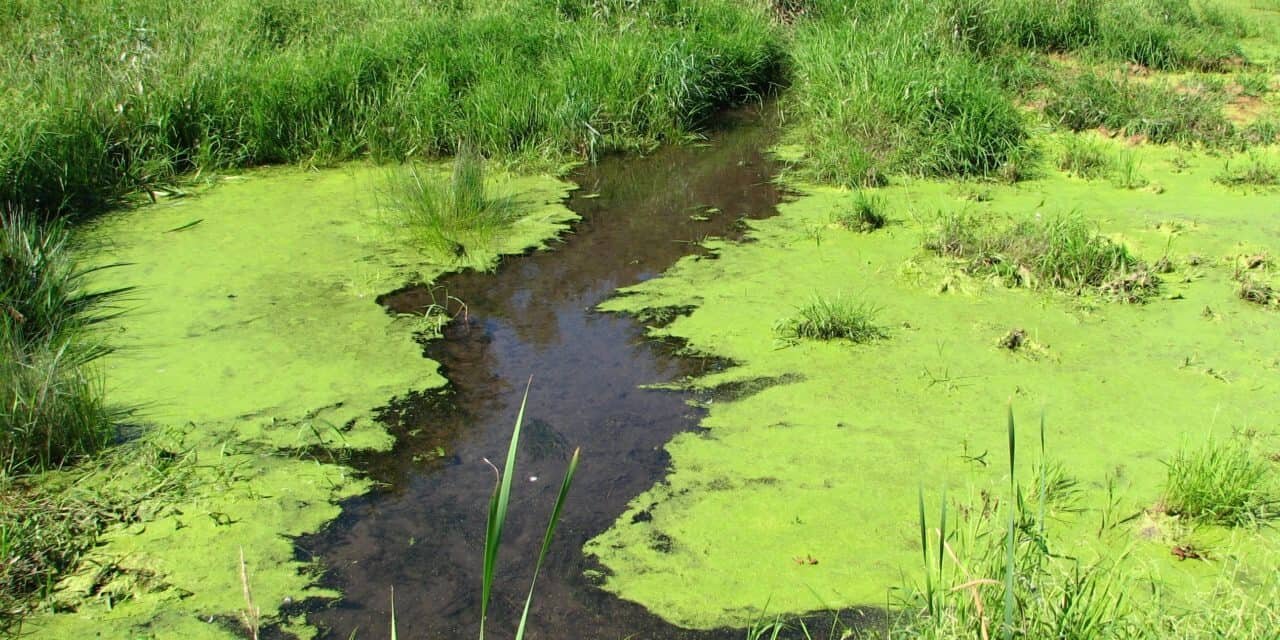In the past few years, stories of dog intoxication from blue-green algae have surfaced across the web and news across the United States. Here’s what you need to know to keep your puppy safe!
@redlabruss
On hot summer days, no one loves going in for a swim more than our pups! The last thing that their owners were thinking about, is a highly-toxic organism lurking in the water. Sadly, this was the case for a few dog owners who realized too late that their pups had ingested this deadly blue-algae. So what can be done to prevent a tragedy? Staying vigilant and spotting blue-green algae, watching out for symptoms, and spreading awareness can help keep your pup and many others stay safe during the summer months!
BROUGHT HOME A NEW PUPPY THIS SUMMER? LEARN ABOUT OUR ONLINE TRAINING PROGRAM!
What is Blue-Green Algae and Why is it Dangerous?
Microcystins — or cyanoginosins commonly known as Blue-green algae is a naturally occurring organism that grows in stagnant bodies of freshwater. It thrives in warmer temperatures of 75 degrees Fahrenheit or above, and sunny conditions which are why many cases of Blue-green algae dog intoxications are reported over the summer months. When ingested it can be extremely toxic and fatal as it attacks the nervous system and liver function.
How to Spot it
Many new puppy owners are not aware of this natural toxin however there are a few indicators you should look out for if you and your pup are near a body of freshwater. Water that can contain this toxic substance will appear with a pea-green color or slimy-looking surface. Oftentimes, the Blue-green algae may still not have bloomed, waiting for the right warm and sunny conditions, and can be below the surface. Knowing this, other signs to look out for include foul-smelling water or the appearance of broken up paint chips floating up to the surface.
Intoxication Symptoms
Blue-green algae intoxication in dogs can develop in a variety of symptoms within hours of swimming or ingesting the poisonous organism. If your puppy begins to show signs of any of the symptoms listed below and you believe they were in contact with Blue-green algae, you should seek veterinary care for your pup immediately!
Seizures
Panting
Excessive drooling
Respiratory failure
Diarrhea
Disorientation
Vomiting
Liver failure (can be visible through jaundice or yellowing of the gums and eyes)
In extreme cases, Blue-green algae in dogs can be fatal so we can’t stress enough to monitor your pups closely when outdoors and near bodies of freshwater!
What Can You Do?
@bill_the_sprocker
Staying vigilant and not allowing your pup to drink or swim in stagnant bodies of fresh water are the top two methods to prevent blue-green intoxication in your pup! The cells of Blue-green algae can live on your pup’s fur and can be ingested if they clean themselves so remember to rinse them off thoroughly if they do take a dip in any body of water.
If you do notice that there is Blue-green algae growth in your local lake or pond, you can alert your local public health department to test the water and post signs! And if you do suspect that your pup has come into contact with or ingested blue-green algae, reach out to ASPCA Animal Poison Control Center at 888-426-4435 and seek out veterinary care immediately.
Lastly, share this post with fellow pup owners you know! Spreading awareness can help prevent potentially fatal intoxication of our sweet pups!
Check out these blogs related to puppy training and more!
Hot Weather Safety Tips for Your Puppy!
What to Ask Your Vet on Your Puppy’s First Visit!
Know the Risks of Foxtails for Your Puppy!



